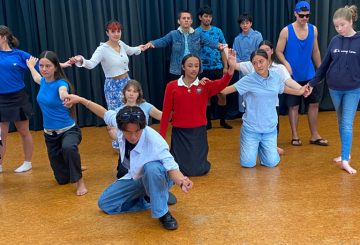ハリントンストリートから17番街まで伸びるキャメロンロードの最近のアップグレードは、地域社会から好評を博しています。このアップグレードには、各方向に2つの車線の追加、横断歩道の増加、および新しい双方向の自転車道が含まれます。
市議会の交通インフラ成果担当マネージャーであるケルビン・ヒル氏は、特に新しい自転車道について、地域社会から肯定的なフィードバックが寄せられていると報告しています。彼は皆に来て改善を自分の目で見てほしいと勧めています。
このアップグレードにより、道路の下にあった100年前の水道管の交換も可能になりました。これは、テ・パパ半島で増加する人口に恩恵をもたらすでしょう。
熱心なサイクリストである引退した夫婦のアンドリューとパム・ソープは、新しい自転車道に特に満足しています。彼らはレクリエーションサイクリングと市内中心部への通勤の両方にこの道路を利用しています。アンドリューは、食料品を家に持ち帰る方法がわかれば、食料品の買い物にも使うだろうと冗談を言いました。
夫妻は、新しい植栽とアップグレードされたキャメロンロードの広々とした雰囲気も高く評価しています。その結果、ドライバーは一般的に交差点ではサイクリストに配慮し、通り過ぎさせるために道を譲ることが多いことがわかりました。
しかし、自転車、歩行者、バスの利用者が同じスペースを共有する共有道路には、いくつかの課題があります。Andrewは、歩行者の中にはサイクリストとスペースを共有することに慣れていない人もいるが、やがては誰もがそれに慣れると信じていると述べています。
新しい自転車道の使い方のヒントについては、www.tauranga.govt.nz/cameronroadをご覧ください。






























































